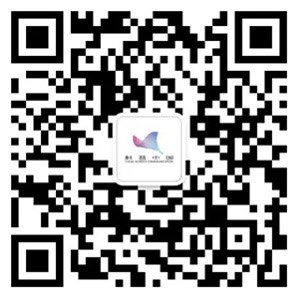这个故事是“珍珠泉”号的船员讲的,题目也是船员给命名的。
故事的主角叫薛宇,“珍珠泉”号上的船医。绰号叫“海上博士。”

薛宇出身在一个偏达的小山村,是座著名医学院的优秀毕业生。几年前放弃了在大城市医院工作的机会,只身参加了海员队伍,在一家航运企业的船上做了船医。
问起缘由,薛宇淡淡地笑着说:“自己喜欢航海。”时间久了,人们发现薛宇不仅医术高明,还特别喜欢读有关航海的书籍,尤其是航海与医学关系方面的书籍,更是爱不释手。
使薛宇成为“海上博士”绰号,是“珍珠泉”号远航欧洲的一次偶然事件。
那天,“珍珠泉”号停靠在法国马赛港。
忽然,码头附近一家游乐园里,一个幼童从跷跷板上不小心掉了下来,摔破了腿,路过附近的“珍珠泉”号船员把幼童带上船,边安抚幼童,边抱怨跷跷板:“该死的魔鬼!”
薛宇边给幼童敷药,边笑着说:“跷跷板在医学史上可是立了大功的呢!”
薛宇讲起了“跷跷板”在医学史上的一些趣事。
大约在十九世纪初,一位年轻的法国医生富奈克,面临一个辣手的问题;要为一位贵族小姐诊断心脏病,拘谨的小姐手捂胸口表情痛苦。富奈克医生手指敲打或触诊毫无作用,又碍于当时的风俗,医生又不能把耳朵贴在病人胸口诊断。如何清楚听到病人的心肺音呢?富奈克陷入冥思苦想中。就在这时,窗外传来儿童玩跷跷板的嬉闹声。情燥心烦的富奈克正准备驱散这些玩童时,陡然发现这些玩童没有骑在跷跷板上,而是用跷跷板玩着声音传递的游戏;一个孩子把耳朵贴在木板一端凝神倾听,其他孩子在木板另端用铁片打击出声音。
这情景使富奈克想起童年玩木杆传声的游戏。
富奈克立刻加入了玩童的行列,把耳朵附在木板上,清楚地听到另一端传来敲打的声音。
兴奋不已的富奈克飞身回到屋内,抓起一叠纸卷成圆筒,一端贴近贵族小姐的胸口,附耳在圆筒在另端倾听。病人的心跳甚至轻微的杂音都贯入耳内。
这是世界上第一个简单的“听诊器”。后来经过富奈克反复多次实验改进,制成了世界上第一个正宗的听诊器。
“这个故事就发生在巴黎。薛宇最后笑着说:“幽默的法国人把跷跷板称做听诊器的‘祖先’呢!”
从此,薛宇被船员誉为“海上博士”。
“珍珠泉”号船员第一次听到“海上博士”讲航海与医学关系的故事,是船横跨赤道时听到的。
“珍珠泉”号春节前夕,由青岛开往澳大利亚,离开时,青岛还是冰天雪地,寒风刺骨,几天后到达赤道海区却烈日炎炎酷热难熬。
“珍珠泉”号抵达赤道时,正值农历正月初一。
船上大厨准备包一顿口味鲜美的饺子,不料,船上冷冻箱出了故障,部分食物变了质。
大厨无奈去请示船长。正在船长房间的潘宇连连了摆手:“腐烂变质的食品绝不能吃,特别是肉质品。”
接着讲起中世纪帆船时间,由于船上设备简陋环境恶劣,没有冷藏设备,食物常常腐烂变质,使许多水手死于病魔之手。
船上做了顿素菜水饺,慰劳大家。
饭后,船上搞了一个传统的过赤道游戏:击鼓传花。一人击鼓众人传花。鼓声停,花落谁手,谁就要抽个签牌。签牌上除有良好的祝愿外,还提出一些稀奇古怪的问题让你回答。答对了有奖品,错了要表演节目。
一阵紧密的鼓声后,花落在水手长手里。
水手长打开签牌一看:“祝你春节快乐。请问我国哪个省种植大米最多?”
水手长毫不犹豫说:“我们老家湖南。水稻之父袁隆平就是我们那里人。”
人们议论纷纷,众说纷纭。
这时,做主持人的“海上博士”潘宇笑着说:“这是道怪异题,大米啥时候都不能发芽生长,只能食用,人们种的是稻谷而不是大米!
此刻,人们才缓过神来,哈哈大笑起来:“大米只能吃不能种。”
待大家笑声渐止,“海上博士”一眼一板地说:“别小看大米,它对医学贡献不小哩!”
说着,“海上博士”讲了航海登陆“医学史”的故事。
中世纪的欧洲,海盗猖獗,为了寻找食物和财富,纷纷扬帆远航。
由于航上条件参差不各,有的卫生条件差,使许多水手死于病患,一些条件较好以大米为主食的船上;水手得了一种奇怪的疾病,整个腿肿如象腿,用手一按便是一个凹陷。全身无力气喘嘘嘘,无法工作,甚至不治身亡。
莫名其妙的疾病,引起人们极度的恐慌。
这时,一位在英国船上服务的日本医生高森雄宽决心拯救水手们的生命。
高森雄宽选择了两个船进行跟踪试验;一艘以食大米为主食的日本船,一艘以肉类和面包为主的英国船。
结果高森雄宽发现;食用大米的日本船,几乎所有都患上了腿肿病,英国船却安然无恙。
高森雄宽认定:腿肿病是大米里一种细菌造成的。但是,经过多次试验,没有找到杀死这种细菌的“灵丹妙药”。
航海产生的腿肿病,引起人们的广泛关注。
一名叫卡西米尔的波兰医学家,最终从米糠里找到一种治疗腿肿病的白色粉末——维生素B。认为水手长期食用大米,不是细菌造成的,而是体内缺乏这种粉末的原故。并把这种白色粉末定名为“维持生命的脚,”由拉丁文生命和脚两词组成,简称HP,后来改名为“维生素B”。
维生素B在治疗许多疾疾中起了不可替代的作用。
由此,航海首次“登陆”了医学史。
听完“海上博士”的讲述,大伙十分兴奋,在夸奖薛宇医生知识渊博的同时,戏称这是“饭碗里的故事。”
“饭碗里的故事”在航海界传开了。“海上博士”的名声越来越响!
This story was first told by a sailor on the cargo ship Pearl Springs.
The protagonist of this tale is a man named Pan. He worked as a physician onboard the
Pearl Springs, and was even nicknamed “The Doctor of the Sea” by his crew.
Pan was born in a remote mountain village in China and worked hard to graduate from a
renowned medical school. A few years ago, he rejected a high paying job at an international
hospital in a Chinese metropolis, and instead joined a nautical shipping company so that he
could drift on the ocean and tend to the injuries and illnesses of a crew of sailors.
When others asked about the reason behind his absurd decision, he chuckled lightly and
answered, “I’ve always wanted to sail.” Over time, those who were close to him realized that
Pan was incredible at diagnosing and curing physical conditions, and also loved to read
novels and short stories regarding maritime history. In particular, he always kept a few books
on nautical medicine in his cabin and flipped through the pages whenever he had free time.
As to how Pan got the nickname “The Doctor of the Sea”, that was actually brought
about by a coincidence.
That day, the Pearl Springs was docked at the Port of Marseille in France. When the
crew was busy loading cargo off of their craft, a boy accidentally fell off a seesaw in a nearby
amusement park and hurt his knee. Desperate for help, him and his family walked past the
Pearl Springs and asked if there was a physician onboard.
The crew welcomed the child onto their boat. Without hesitation, Pan opened his
medical kit and began cleaning and applying medicine to the boy’s wound. But despite the
sailors’ best efforts to calm him, the boy kept screaming, “I hate the seesaw!”
As Pan wrapped a bandage around the boy’s knee and offered a kind smile. “You know,
the seesaw has in fact made many important contributions to medical history!”
The child fell silent and looked at Doctor Pan with curious eyes. Pan explained that at
the beginning of the 19th century, a French physician named Laennec had tried to diagnose a
noblewoman with heart disease but was met with a slew of problems. He felt her pulse on her
wrist to no avail, and because of the cultural customs at the time, he wasn’t comfortable with
putting his ear to her chest.
So how could he clearly decipher the sounds in his patient’s chest and lungs? Laennec
was lost in thought, but he was disturbed by the children who were playing on the seesaw
outside of his home. Just when he was about to shoo the kids away, he noticed that inside of
riding on the seesaw, the children were playing a game of sound transmissions. One child
leaned his head against one end of the seesaw and listened carefully, while another used a
piece of iron to gently tap on the other end, making simple beats and musical notes.
The kids reminded Laennec of his time playing whispering games through wooden
poles.
Laennec quickly joined the children in their game and stuck his ear to one side of the
seesaw. He was amazed when he heard clear, twinkling sounds coming through from the
other end.
Realizing that he just had a breakthrough, Laennec dashed back to his house, grabbed a
piece of paper, rolled it into a cylinder, and put one opening against the lady’s chest and his
ear against the other. The patient’s heartbeat and even the slightest murmur became amplified
and perfectly clear to Laennec.
Little did Laennec know, he had invented the world’s first stethoscope. After many
experiments and improvements, Laennec unveiled his invention and presented it to thousands
of doctors all across the world. This medical miracle is used widely in hospitals even today!
Doctor Pan laughed and continued, “This story took place in Paris. Some people even
joke that the seesaw is the ancestor of the stethoscope!”
Ever since then, the crew has referred to Pan as the Doctor of the Sea. They loved
listening to his stories about medicine and history, but the first time they ever heard him tell a
story related to nautical history was when the ship crossed through the Equator.
On the eve of the Spring Festival, the Pearl Springs embarked on a voyage from
Qingdao, China, to Brisbane, Australia. When they set sail, Qingdao was still deep in the
grasp of winter. But only a few days later, the Pearl Springs wandered into a scorching
summer as they wandered into the equator.
Since it was the first day on the Lunar Calendar, the chief cook had planned to prepare a
festive dumpling meal for the sailors. Unfortunately, due to the drastic changes in weather,
the refrigerator on board broke down, and half of the foods inside it rapidly deteriorated.
The disgruntled cook sought out his Captain for advice. Pan, who just so happened to be
in the Captain’s office, shook his head and said, “The spoiled meat is definitely inedible,
although perhaps the vegetables left are still safe to eat.”
Pan mentioned that during the Middle Ages, the harsh environments and lack of proper
refrigeration onboard crafts constantly caused meats to become spoiled, thus spreading
foodborne diseases to many sailors who perished.
The cook took Pan’s advice and prepared vegetarian dumplings as consolation.
After dinner, the crew engaged in a rhythm game that many sailors play to pass time:
Pass the Parcel. One sailor tapped on a drum as his crewmates passed around a flower, and
when the drumming stopped, the person who had the flower had to draw a message out of a
mystery box. Aside from quotes and fortune slips, the box also contained lists of trivia
questions that the player had to answer. If the sailor answered correctly, he’d get a small
peculiar prize, but if he got it wrong, he had to perform a song or dance in front of the entire
crew.
After the first round of intense drumming, the flower fell in the hands of the chief
officer.
He opened the piece of paper and read out a question. “Happy Chinese New Year. In
China, the farms in which province grows the most rice?”
The officer said confidently, “The answer is my hometown of Hunan. The Father of
Rice, Yuan Longping, is from our province.”
Even though his answer seemed correct, his fellow sailors had different opinions. Each
person wanted to say that their own province grew the most rice instead.
Doctor Pan, who was hosting the game, piped up and said cheerfully, “This is a trick
question! You can’t grow rice, rice can only be eaten. What we grow and harvest is grain
plants, which is different from the rice that we eat during our meals.”
The sailors burst out laughing. “You can’t grow rice beads!”
Doctor Pan gestured for the sailors to settle down. “Don’t laugh at grain plants just yet!
They were monumental in the development of medicinal science.”
The crew quieted themselves, and Pan launched into the story of how nautical
adventures gained their place in medical history.
During the Medieval Period, pirates rampant in the seas near Europe and sometimes
sailed to faraway lands in search of distant lands and foreign treasures. However, due to poor
sailing conditions, poor sanitary upkeep, and the many diseases of the time, certain pirates
kept only rice as their main source of nutrition during long voyages.
A sailor on one such pirate ship developed a strange disease that no one knew the cause
of. His leg was swollen like an elephant’s, and when he tried to push down on it, his hands
left a large dent in his skin. He became weak and fragile, unable to work, and his pain was so
great that he wished to sleep forever.
His crewmates also became afraid of the sick sailor, fearing that the disease was
somehow contagious. Luckily, as they looked for external help, a Japanese doctor named
Yusuke Takamori was assisting the doctors on a British steamship nearby. Takamori took an
interest in the case of the elephant leg, and was determined to find a cure.
After investigating the pirate ship, Takamori decided to hold an experiment. He tracked
the health of the sailors on two different vessels: one was a Japanese ship that used rice as its
primary source of food, and the other was a British craft whose crew dined mostly on bread
and meat.
Takamori discovered that the majority of sailors on the Japanese ship fell victim to the
elephant legs, but the men on the British craft were completely healthy.
Following multiple rounds of investigation, Takamori came to the conclusion that this
disease resembling elephant legs was caused by a bacteria that can be found in rice.
Frustratingly though, despite how hard he tried, Takamori couldn’t find a remedy for this
bizarre ailment.
Takamori spread the word about the elephant leg disease across the world in hopes of a
scientific breakthrough with the help of other doctors.
Finally, a biochemist from Poland named Casimir Funk researched the elephant leg
disease and found a substance found in rice bran that could be used to cure the swelling of the
sailors’ legs. He believed that the source of this illness was not the bacteria found inside the
rice, but instead because the sailors were lacking in this substance.
This substance was eventually named “Vitamin B”. Funk used this substance to heal the
sailors of their disease, and later many other illnesses, too. Today, the many different types of
vitamins are staples in every person’s diet, and are irreplaceable sources of nutrition.
Thus, maritime history and medicinal ventures became monumentally intertwined.
Doctor Pan was met with applause when he finished his story. The crew was impressed
with his knowledge and expertise, but also proud that the rice they ate everyday contributed
to a significant scientific breakthrough. Stories of Doctor Pan and his wise words were told
across the nautical world, making him a legendary “Doctor of the Sea”.




 扫码下载APP
扫码下载APP

 科普中国APP
科普中国APP
 科普中国
科普中国
 科普中国
科普中国